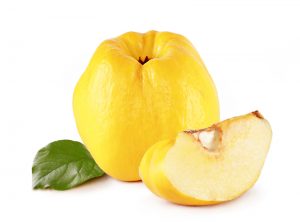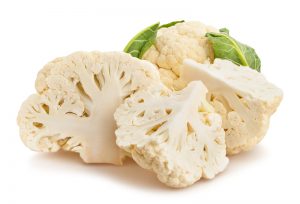12 Fall Foods That Benefit Your Health, Inside and Out
If you're a fan of squash, apples, and root vegetables then autumn is the season for you. Here's why you should stock up on fall foods.
As the leaves change color and the air turns crisp and cool, some of Mother Nature’s most flavorful and colorful fruits and vegetables start to reach their peak. And even though technological advances allow us access to fall foods year-round, nothing beats the texture and flavor of these gems when they’re picked during their designated season.
So, we’ve chosen 12 of our favorite fall fruits and vegetables. Our selections not only will brighten up your dinner plate, but they’ll also provide essential nutrients—such as fiber, protein, and antioxidants—to prep your body for the long winter ahead. Most of these choices also fall under the umbrella of comfort foods.
12 Fabulous Fall Foods to Add to Your Plate
#1. Pumpkins
Pumpkins are a hallmark icon for autumn, but this fall staple offers more than just a festive decoration and flavor. They’re an adequate source of protein, fiber, vitamins, and antioxidants that can lower your risk of heart disease, cancer, cataracts, and more. For more information, check out Pumpkin Health Benefits: Here’s How This Fall Favorite Helps.
#2. Butternut Squash
If you’re looking to improve your bone density and eye health or reduce chronic inflammation, look no further this fall than butternut squash. It’s an excellent source of potassium, beta-carotene, and various antioxidants that are beneficial to those living with rheumatoid arthritis and fibromyalgia. For more information, check out Butternut Squash Benefits Include Heart and Eye Health.
#3. Apples
Looking to lose weight or increase your energy level? Apples can do both. Since they’re low in calories and high in fiber, apples can keep you satiated for longer periods of time. And when paired with foods rich in protein, apples can keep you powered through a busy afternoon. For more information, check out Health Benefits of Apples.
#4. Brussels Sprouts
If you’ve never been a fan of this member of the cruciferous family, you might want to think again. Brussels sprouts are rich in folate, vitamin C, and compounds that can reduce your risk of cancer. And here’s a little tip: Brussel sprouts taste much better when you roast or sauté them rather than boiling them. For more information, check out Eat Your Brassicas! The Benefits of Cruciferous Vegetables.
#5. Sweet Potatoes
We’re not necessarily talking about those candied sweet potatoes that adorn your Thanksgiving table at this time of the year. Think broiled, roasted, or mashed sweet potatoes—a healthy source of fiber, magnesium, and manganese, which are good for your bones, blood pressure, and metabolism. They’re also a healthy choice for diabetics because they won’t make your blood sugar levels spike as much as white potatoes do. For more information, check out Sweet Potatoes vs. Potatoes: Which Are Healthier?

If you haven’t tried a quince, give this refreshing example of fall foods a try.
#6. Quince
If you’ve never tried one, now’s the time. With a flavor that falls somewhere in between an apple and a pear, quince is rich in antioxidants, fiber, and vitamin C, which can aid in weight control, digestion, and blood pressure management. Plus, they’re quite versatile—you can poach, bake, or puree them. For more information, check out Quince Fruit: Fall’s Best-Kept Secret.
#7. Broccoli
Packed with fiber, vitamins, minerals, and antioxidants, broccoli can decrease the risk of various cancers and eye diseases due to its high concentration of carotenoids. Broccoli’s especially high in vitamin K, which is essential for the functioning of many proteins involved in blood clotting, and folate, which helps produce and maintain new cells in the body. For more information, check out The Best Cholesterol-Lowering Food: Cruciferous Vegetables.

One of the unsung stars of cruciferous vegetables, the cauliflower is low in fat and low in sodium. It’s also a worthy source of fiber, folate, and vitamin C, as the U.S. Department of Agriculture tells us.
#8. Cauliflower
This increasingly popular fall food is more than just a low-carb substitute for rice. Cauliflower is an excellent source of vitamin C, vitamin K, choline, folate, pantothenic acid, and vitamin B6. It also contains glucosinolates, a type of phytonutrient that is known for supporting detoxification, decreasing inflammation, and preventing cancer. For more information, check out Cauliflower Nutrition 101.
#9. Pears
Due to their high concentration of copper and iron, pears can help your body fight fatigue, muscle weakness, and anemia. They’re also rich in cancer-fighting antioxidants and vitamin C. And, according to usapears.org, this underappreciated fruit is “a nutrient-dense food that contains only 100 calories and is fat-free.” Pears are also an excellent source of fiber. Again, from usapears.org: “A medium-sized pear packs 6 g of fiber, which equals about 24 percent of the recommended daily value.”
#10. Cranberries
Your Thanksgiving feast just isn’t complete without the flavorful cranberry, rich in antioxidants called anthyocyanins. Anthyocyanins are known for their anti-inflammatory, anticarcinogenic, antibacterial, and antiviral properties, which are suitable for preventing urinary tract infections and benign prostatic hyperplasia. For more information, check out our post Cranberries: The Healthy Holiday Antioxidant.
MORE FALL FOODS TO TRY
They may not have made our “must-eat” list, but that doesn’t mean you shouldn’t make the following fall foods a part of your healthy diet. These choices are definitely worthy of room on your plate:
- Spinach
- Turnips
- Radish
- Radicchio
- Parsnips
- Cabbage
- Grapes
- Figs
#11 Beets
This sweet vegetable is rich in fiber and antioxidants as well as natural nitrates that can lower your blood pressure and blood sugar. Studies also show that beet juice can help lower glucose and insulin levels, which are especially important in preventing type 2 diabetes and metabolic syndrome. For more information, check out Why Are Beets Good for You? These Sweet Root Vegetables Offer a Host of Benefits.
#12 Kale
Love it or hate it, but there’s a reason why kale is called a “superfood.” It’s healthy for your bones and heart, plus it can help you control your weight, detoxify your body, and lower your cholesterol. For more information, check out Kale Benefits: 7 Reasons to Eat This Superfood.


 Ask the EN Experts March 2025
Ask the EN Experts March 2025  Vegan Diet Better Than Omnivore Diet for Cardiovascular Health
Vegan Diet Better Than Omnivore Diet for Cardiovascular Health 
Apples, Brussels sprouts, and cranberries are fall foods that provide plenty of vitamins, minerals and antioxidants.
© Matt Antonino | Dreamstime.com